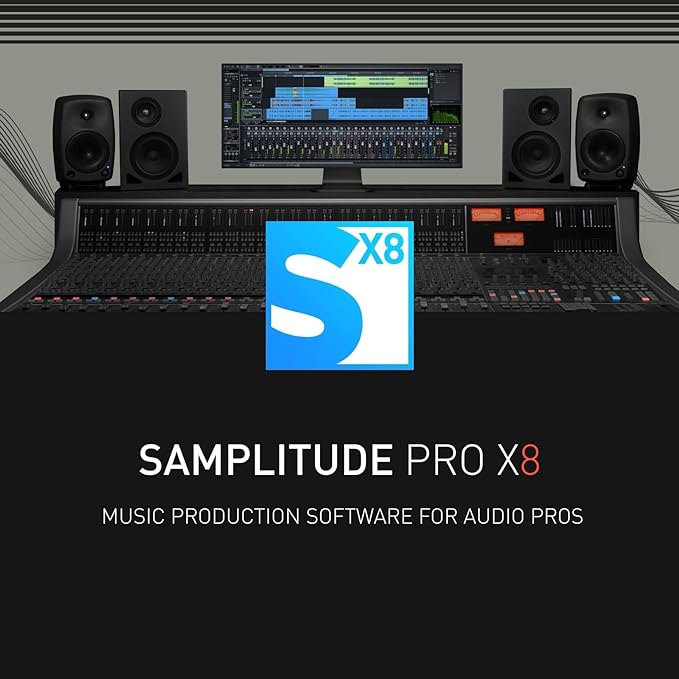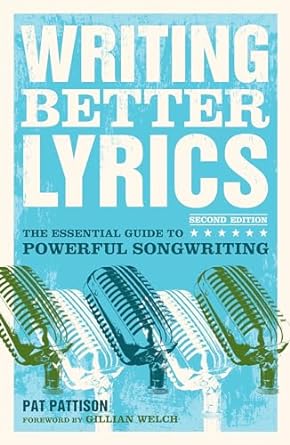This blog delves into the fascinating world of how songs are structured, dissecting the fundamental elements like verses, choruses, and bridges. It explores common song structure formats, showcases variations across genres, and provides insights into the emotional impact of different structures on listeners. Whether you’re a songwriter seeking inspiration or a music enthusiast curious about the inner workings of your favourite tunes, this blog will uncover the secrets behind the songs you love.
Introduction
In the symphony of human emotions and experiences, songs are the notes that resonate with our souls.
These harmonious compositions often seem like magic, effortlessly weaving stories and sentiments into melodies that captivate our hearts.
Yet, behind the enchantment lies a carefully crafted framework—the structure of a song.
Welcome to a journey through the intricacies of song structure. In this blog, we will unravel the blueprint that musicians use to create musical masterpieces.


From the verses that tell stories to the infectious choruses that stay with us long after the music fades, we’ll explore how songs are ingeniously constructed.
Whether you’re an aspiring songwriter seeking inspiration, a devoted music lover keen to understand the art better, or simply curious about the hidden mechanics of your favourite tunes, join us as we dissect, analyse, and celebrate the art of song structure.
Prepare to see, or rather, hear, music in an entirely new light
How Songs are Structured
Songs are structured using various formats such as verse-chorus, AABA, and more. This arrangement involves organizing lyrics and melodies into sections, like storytelling chapters, to evoke emotions and captivate listeners. Explore the art of song structure with popular examples.
How Songs are Structured:
Top 5
- Verse-Chorus Structure
Example Song: “Imagine” by John Lennon
This is one of the most common song structures, featuring alternating verses and choruses. Verses provide context and storytelling, while the chorus delivers the central message or emotional core of the song.
- AABA Structure
Example Song: “Fly Me to the Moon” by Frank Sinatra
The AABA structure consists of two identical verses (A), followed by a contrasting bridge (B), and a return to the initial verse (A). It’s often used in jazz standards and classic songs.
- Verse-Pre-Chorus-Chorus Structure
Example Song: “Teenage Dream” by Katy Perry
This structure begins with a verse, followed by a pre-chorus that builds anticipation, and then a catchy and repetitive chorus. It’s designed to engage listeners and make the chorus stand out.
- Chorus-Verse-Chorus Structure
Example Song: “With or Without You” by U2
In this structure, the song starts with a chorus, followed by verses that provide context and detail. It’s a format that grabs attention immediately with the most memorable part of the song.
- ABAB Structure
Example Song: “Blowin’ in the Wind” by Bob Dylan
The ABAB structure alternates between sections—typically verses (A) and contrasting sections (B). It provides variety while maintaining a sense of cohesion in the song.


SAMPLITUDE Pro X8
The Master of Pro Audio | Recording, Editing, Mixing & Mastering | Audio Software | Music Program | for Windows 10/11 PC | 1 PC License
4 Song Structure Types to Know & When to Use Them in Your Songwriting (careersinmusic.com)
The Basic Elements of How Songs are Structured
In the rhythmic journey of a song, various elements play distinct roles in shaping its character and narrative. Let’s dive into the core components of song structure, each with its unique attributes and contributions.
A. Verse
Definition and Purpose
The verse serves as the storyteller of a song. It lays the foundation for the narrative, presenting lyrics that convey the song’s message, emotions, or storyline.
Verses often provide context, setting the stage for the chorus to shine. They are typically where the details and depth of the song’s content are explored.
Examples from Popular Songs
In “Imagine” by John Lennon, the verses vividly describe a world without borders, inviting listeners to envision a more harmonious world.
Taylor Swift’s “Love Story” employs verses to narrate a modern-day Romeo and Juliet tale, revealing the emotions of the characters.
B. Chorus
Definition and Importance
The chorus is the emotional core of a song, the part that often lingers in our minds. It features a repetitive, catchy melody and lyrics, emphasizing the song’s main theme or message.
The chorus serves as the anchor, providing a sense of familiarity and unity within the composition.
Examples from Well-Known Songs
Queen’s “Bohemian Rhapsody” builds to an iconic chorus that showcases the intensity and drama of the song.
Adele’s “Rolling in the Deep” uses a powerful chorus to express the depth of heartbreak and betrayal.
C. Bridge
Explanation of the Bridge’s Role
The bridge is the curveball in a song’s structure. It introduces a contrast to the verses and chorus, often featuring different lyrics, melody, or rhythm.
Its purpose is to add variety, build anticipation, or provide a new perspective on the song’s theme. Bridges can be a pivotal moment of emotional release or revelation.
Notable Bridge Examples
Leonard Cohen’s “Hallelujah” incorporates a soul-stirring bridge that intensifies the emotional impact of the song.
The Beatles’ “Hey Jude” uses a bridge to build to a climactic ending, changing the song’s dynamics.
D. Pre-Chorus
Definition and Function
Not all songs include a pre-chorus, but when they do, it acts as a transitional element. Positioned between the verse and chorus, the pre-chorus builds anticipation and tension, often preparing the listener for the emotional release of the chorus. It’s a bridge to the bridge, so to speak.
Songs with Memorable Pre-Choruses
Katy Perry’s “Firework” features a pre-chorus that encourages listeners to find their inner strength before the explosive chorus.
Coldplay’s “Fix You” employs a moving pre-chorus that intensifies the emotional impact of the song’s uplifting message.
As we explore these song elements, remember that their arrangement and interplay contribute to the unique identity and emotional resonance of each song. Together, they form the building blocks of musical storytelling.
How Songs are Structured:
Common Formats
In the grand symphony of music, different song structure formats emerge as blueprints for songwriters to craft their compositions. Let’s explore three of the most prevalent structures that have shaped countless songs across genres.
A. AABA
Explanation and Characteristics
The AABA structure is a classic and time-tested format that consists of four distinct sections: two identical verses (A), followed by a contrasting bridge (B), and a return to the initial verse (A).
This format allows songwriters to establish a theme, introduce variation, and then bring the listener back to familiar territory.
Classic Songs Following the AABA Format
Frank Sinatra’s “Fly Me to the Moon” exemplifies the AABA structure with its romantic verses, a contrasting bridge, and a return to the longing sentiments of the initial verses.
“Somewhere Over the Rainbow” from “The Wizard of Oz” uses AABA to take listeners on a journey from Dorothy’s world to a dreamy, ethereal realm.
B. Verse-Chorus
Description of the Most Common Song Structure
The verse-chorus structure is the bedrock of modern popular music. It features alternating verses and choruses, with each chorus having the same melody and lyrics.
Verses provide context and narrative, while the chorus delivers the song’s central message or emotional core. This format is known for its catchiness and accessibility.
Modern Songs Utilizing Verse-Chorus Structure
Ed Sheeran’s “Shape of You” is a prime example of the verse-chorus structure, with its memorable verses leading to an infectious chorus.
Beyoncé’s “Halo” masterfully combines verses that tell a personal story with a powerful, soaring chorus.


How to Write Better Songs
This book is ultimate step-by-step quick start to writing a song right away, even though you have never written a song before. Tips from award winning songwriters in this book will help you in writing your songs.
C. ABAB
Overview of the ABAB Pattern
The ABAB structure is a straightforward and often-used format. It features alternating sections—typically verses (A) and contrasting sections (B).
This structure provides variety and keeps the listener engaged by regularly introducing new content.
Songs Using the ABAB Structure
Bob Dylan’s “Blowin’ in the Wind” employs the ABAB structure to pose thought-provoking questions in the verses (A) and offer possible answers in the contrasting sections (B).
The Beatles’ “Let It Be” combines verses (A) that convey a sense of acceptance with the reassuring message of the choruses (B).
These common song structures are like canvas and brush, providing songwriters with frameworks to paint their musical stories.
Whether it’s the timeless AABA, the chart-topping verse-chorus, or the versatile ABAB, each structure has its own charm and lends itself to crafting songs that resonate with diverse audiences.
How Songs are Structured: Variations and Hybrid Structures
As music continues to evolve, songwriters constantly innovate by experimenting with structure. In this chapter, we’ll explore some intriguing variations and hybrid structures that add depth and diversity to the world of song writing.
Verse-Pre-Chorus-Chorus
Explanation and Examples
The Verse-Pre-Chorus-Chorus structure is a dynamic way to build anticipation and excitement in a song. It begins with a verse that sets the scene, followed by a pre-chorus that serves as a bridge between the verse and the chorus.
The pre-chorus often intensifies the emotional impact before launching into the catchy and repetitive chorus.
Examples
Katy Perry’s “Teenage Dream” features a verse that tells a story of young love, a pre-chorus building anticipation, and an infectious chorus celebrating the joy of youth.
Rihanna’s “Umbrella” employs this structure to build tension before the explosive chorus, enhancing the song’s impact.
Chorus-Verse-Chorus
Description and Popular Songs
The Chorus-Verse-Chorus structure flips the traditional format, beginning with the chorus before moving into verses that provide context and detail.
This format often captivates listeners immediately with the most memorable part of the song, making it a favourite for radio-friendly tracks.
Popular Songs Utilizing Chorus-Verse-Chorus Structure
U2’s “With or Without You” starts with a hauntingly beautiful chorus before delving into verses that explore themes of longing and desire.
The Police’s “Every Breath You Take” grabs attention with its iconic chorus, followed by verses that delve into the darker aspects of obsession.


How Songs are Structured in Different Genres
How Structure Varies in Rock, Pop, Hip-Hop, and More
Song structure isn’t one-size-fits-all; it adapts to the unique characteristics of different musical genres
In this section, we’ll explore how song structure varies across various genres, shaping the way artists convey their messages and emotions.
- Rock: Rock songs often feature guitar-driven intros, followed by verses that tell stories and choruses that serve as anthemic rallying points. Bridges in rock music can be instrumental solos or moments of intensity.
- Pop: Pop music frequently employs the verse-chorus structure, focusing on catchy melodies and relatable lyrics. It’s known for its accessibility and earworm choruses.
- Hip-Hop: Hip-hop often uses repetitive hooks and verses that showcase lyrical prowess. The structure varies but frequently includes catchy choruses or refrains.
- Electronic Dance Music (EDM): EDM relies heavily on repetitive beats and drops, with structures that prioritize building energy on the dancefloor. It may have instrumental breakdowns instead of traditional verses and choruses.
- Country: Country songs often follow narrative-driven structures, with verses that tell stories and choruses that emphasize the emotional core of the song.


Understanding how structure adapts to different genres is key to appreciating the diversity and richness of the musical landscape.
Whether it’s the innovative hybrid structures or genre-specific variations, songwriters continue to push the boundaries of what’s possible in music composition.
Songwriting Techniques
In the realm of songwriting, the synergy of lyrics and melody is where the magic truly happens. In this chapter, we’ll delve into the techniques that songwriters employ to craft compelling lyrics and melodies that harmoniously fit within the song’s structure.
How to Write a Song | 10 Songwriting Tips from the Pros (dittomusic.com)
Crafting Lyrics to Fit the Song Structure
Crafting lyrics that seamlessly integrate with a song’s structure is an art form in itself.
Here’s how songwriters ensure that the words they choose not only convey their message but also enhance the overall composition:
- Theme Consistency: Lyrics should align with the song’s theme and emotional tone. Verses can provide context, while the chorus encapsulates the core message.
- Rhyme Scheme: Songwriters often employ rhyme schemes to create cohesion within verses and choruses. This can add a pleasing lyrical flow.
- Imagery and Storytelling: Verses offer an opportunity to tell a story or paint vivid imagery, drawing listeners into the narrative.
- Emotional Resonance: The choice of words and metaphors should resonate with the song’s intended emotional impact.


Writing Better Lyrics
Writing Better Lyrics has been a staple for songwriters for nearly two decades. Now this revised and updated 2nd Edition provides effective tools for everything from generating ideas, to understanding the form and function of a song, to fine-tuning lyrics
The Role of Melody in How Songs are Structured
Melody is the soul of a song, and its interplay with structure is a delicate dance. Here’s how melody contributes to the overall structure:
- Catchy Choruses: Melodies in the chorus are often designed to be memorable and easy to sing along with. This is where the song’s hook is typically found.
- Versatile Verses: Verses may have more flexible melodies, allowing for storytelling and variation in phrasing while maintaining a connection with the song’s overall melody.
- Bridge Dynamics: Melodies in the bridge can introduce a fresh perspective or emotional intensity, providing a contrast to the rest of the song.
Tips for Creating Memorable Bridges and Pre-Choruses
Bridges and pre-choruses are pivotal moments in song structure, and crafting them effectively requires finesse. Here are some tips for making these sections stand out:
- Contrast and Surprise: Use the bridge as an opportunity to introduce new elements—lyrical, melodic, or rhythmic—that surprise and captivate the listener.
- Emotional Build-Up: The bridge can serve as a crescendo, intensifying the emotional impact of the song before returning to the chorus.
- Bridge Lyrics: Ensure that the lyrics in the bridge contribute to the overall narrative or message of the song, providing a fresh perspective or resolving conflicts.
- Pre-Chorus Tension: Pre-choruses should build anticipation, preparing the listener for the emotional release of the chorus. Use them to raise questions or introduce conflict.
In the realm of songwriting, the balance between lyrics and melody, and the skilful use of bridges and pre-choruses, is where the songwriter’s craftsmanship shines.
These elements come together to create songs that not only follow a structure but also resonate deeply with the hearts and minds of the audience.
The Emotional Impact of How Songs are Structured
As listeners, we often underestimate the power of song structure in influencing our emotional responses.
In this chapter, we will explore how song structure, when used strategically, can shape and heighten the listener’s experience, and how to dissect songs to better understand these emotional shifts.


How Structure Affects the Listener’s Experience
Song structure isn’t just a framework; it’s a conduit for emotions. Here’s how it impacts the listener’s journey:
- Tension and Release: Songwriters strategically place moments of tension (often in verses or bridges) followed by release (typically in choruses) to elicit emotional reactions. This can create anticipation and satisfaction, mirroring the ebb and flow of life’s ups and downs.
- Repetition and Familiarity: The repetition of a chorus or melody can make listeners feel comfortable and connected to the song. It’s like meeting an old friend in a new place. Familiarity breeds emotional attachment.
- Surprise and Resonance: Effective use of structural surprises, like unexpected bridges or key changes, can jolt the listener’s emotions, making the song more memorable and impactful.
Analysing Songs to Understand Emotional Shifts
To gain a deeper appreciation for how song structure influences emotions, consider these analytical techniques:
- Listen Actively: Pay attention to how the song makes you feel at different moments. Note when your emotions peak or when you find yourself singing along.
- Identify Structural Elements: Break the song down into its components—verses, choruses, bridges, and any variations. How do these sections affect your emotional response?
- Lyrics and Melody: Analyse the lyrics and melody within each section. Are there changes in tone, mood, or intensity that coincide with structural shifts?
- Compare to the Message: Consider the song’s lyrics and theme. How does the structure amplify or underscore the intended emotional message?
- Revisit Familiar Favourites: Analyse songs you love and have a strong emotional connection with. What is it about their structure that resonates with you on a deep emotional level?
By actively engaging with songs and dissecting their structure, you’ll not only deepen your appreciation for music but also gain insights into the artful manipulation of emotions by songwriters.
Music’s ability to evoke feelings and connect with the human experience is, in no small part, due to the mastery of song structure.
How Songs are Structured: Conclusion
In the tapestry of human creativity, music stands as a testament to our ability to convey emotions, stories, and experiences through the harmonious marriage of lyrics, melody, and structure.
Throughout this journey into the world of song structure, we’ve discovered that it serves as the architectural blueprint behind the songs that move us, inspire us, and stay with us for a lifetime.
From the poignant verses that weave tales of love and loss to the powerful choruses that unite us in celebration, song structure is the canvas upon which songwriters paint their stories and emotions.


Whether it’s the classic AABA format, the ever-catchy verse-chorus structure, or innovative hybrids that push creative boundaries, each structure lends its own unique flavour to the musical landscape.
We’ve also learned how songwriters craft lyrics and melodies that fit seamlessly within these structures, amplifying the emotional impact of their compositions.
The artful use of bridges and pre-choruses adds depth and variety, while structural surprises keep us engaged and invested in the musical journey.
Moreover, we’ve delved into how song structure profoundly affects the listener’s experience.
Tension and release, repetition, familiarity, and surprise all play a role in evoking emotions that resonate with our own lives and experiences.
Final Note
As you continue to explore the world of music, I encourage you to listen actively, dissect songs, and appreciate the nuances of structure that breathe life into the melodies you cherish.
Whether you’re a songwriter seeking inspiration or a music enthusiast with a newfound understanding, remember that song structure is the invisible hand guiding the emotional voyage of every song.
In the end, it’s the magic of song structure that allows us to feel, to connect, and to find solace, joy, and reflection in the beautiful symphonies of life.
So, as you press play and let the music envelop your senses, take a moment to appreciate the structured artistry that transforms sound into emotion and turns notes into memories.








